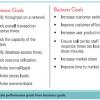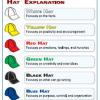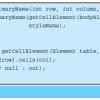|
|
Swan Song: How Testers Can Find Improbable and Unexpected Errors Black Swans, in the book by Nassim Nicholas Taleb, are improbable and unexpected events with a severe impact. One of the most important goals of testing is to find problems in the product. What can testers do to help reduce the likelihood that we'll encounter a Black Swan?
|
|
|
|
Three Kinds of Measurement and Two Ways to Use Them Are software development and testing sciences subject to the same kind of numerical measurement that we use in physics? If not, what kinds of measurements should we use? How could we think more usefully about measurement?
|
|
|
|
Issues about Metrics about Bugs Managers often use metrics to help make decisions about the state of the product or the quality of the work done by the test group. Yet, measurements derived from bug counts can be highly misleading because a "bug" isn't a tangible, countable thing; it's a label for some aspect of some relationship between some person and some product, and it's influenced by when and how we count ... and who is doing the counting.
|
|
 |
Understanding Software Performance Testing Part 1 Most people don't fully understand the complexities and scope of a software performance test. Too often performance testing is assessed in the same manner as functional testing and, as a result, fails miserably. In this four-part series we will examine what it takes to properly plan, analyze, design, and implement a basic performance test. This is not a discussion of advanced performance techniques or analytical methods; these are the basic problems that must be addressed in software performance testing.
|
|
|
|
Off the Trails A focused approach toward testing a product is important, but sometimes we discover information that we didn't anticipate at all. One of the key skills in testing is dynamically managing our focus; sharpening it sometimes and widening it at other times. If we vary our approaches, we might find something surprising and broaden our coverage.
|
|
 |
Six Thinking Hats for Testers Fresh ideas can provoke us into discovering great insights: Six thinking hats did just that for Julian Harty, who then applied them to software testing with great success. He, and tens of others, has found the thinking hats easy to use, practical, and very productive. Read on to find out how you can apply them to your work.
|
|
|
|
A Map by Any Other Name A mapping illustrates a relationship between two things. In testing, a map might look like a road map, but it might also look like a list, a chart, a table, or a pile of stories. We can use any of these to help us think about test coverage.
|
|
 |
Google Web Toolkit: Writing Ajax Applications Test First In part two of the series, Daniel introduces Google Web Toolkit's testing infrastructure and demonstrates how to build an Ajax application test first.
|
|
|
|
The One-Hour Regression Test If a customer asked you to demonstrate to him, within an hour, that your newest software is ready for use, what tests would you run? Are these the same tests that you are now performing in your first hour of regression testing? They should be.
|
|
|
|
Got You Covered Excellent testing starts by questioning the mission. So, the first step when we are seeking to evaluate or enhance the quality of our test coverage is to determine for whom or what we're determining coverage.
|
|

